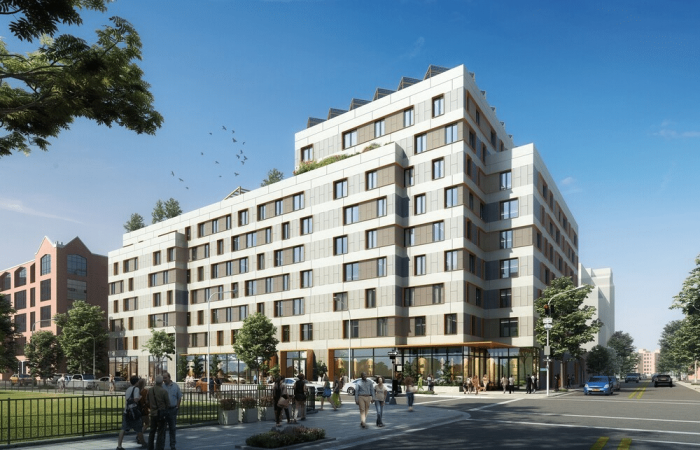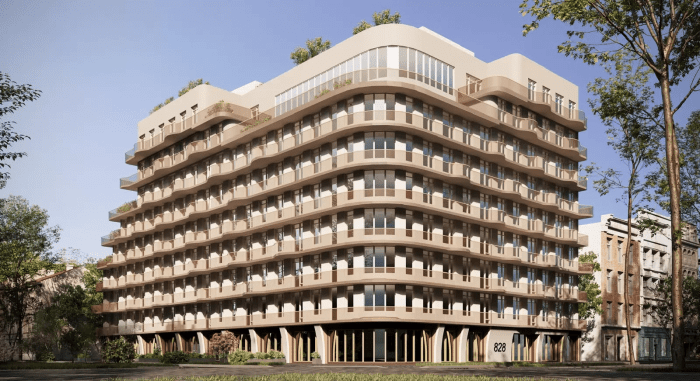In hopes of curbing sky-scraping development in Greenpoint and Williamsburg, the city has proposed capping the height of buildings in a 175-block downzoning that residents said should have happened years ago.
Last week, the Department of City Planning unveiled plans to initiate height limits in much of the quick-changing communities, barring new buildings from being taller than 50 feet on the narrow residential streets that make up 80 percent of the area, and 70 feet on many wider residential streets.
“The new zoning will direct new buildings to follow the context of what exists here already,” said Brooklyn City Planning Director Purnima Kapur of the district, whose north and western border is the waterfront area that the city controversially upzoned in 2005.
The proposed rezoning would also nix the so-called “height factor” loophole that allows developers to build as tall as they like as long as they obtain large lots — giving way to buildings like the 106-foot high-rise that towers over Eckford Street and the 125-foot edifice that looms over Richardson Street.
Builders that develop residences on bustling blocks including McGuinness Boulevard and Manhattan, Metropolitan and Union avenues, among others, would be allowed to build to 80 feet if they include affordable housing in their buildings or in units nearby.
A stretch of irregularly shaped lots along the Brooklyn–Queens Expressway would maintain its current zoning, which planners said would encourage development on land that would otherwise be difficult to use.
The city also intends to tweak shopping areas to encourage businesses to open on busy commercial streets, while keeping them away from adjacent residential blocks.
Greenpoint and Williamsburg residents are happy that the proposal would curb much of the high-rise development — but they wish the city had put the limits in place shortly after the 2005 rezoning.
“The most important thing is that we get some version of this done very, very quickly,” said community activist Evan Thies. “I’m disappointed at how slowly the Department of City Planning has come up with this. A lot of damage has already been done.”
More development is likely in the months before the downzoning takes effect.
After the Department of City Planning finalizes the plan, it will need to go through a lengthy land-use review, which includes public hearings, community board meetings, approval from the borough president, and a vote by the City Council.























